Let’s talk about email marketing for bloggers.
Whether you’re brand new to blogging, or you’ve been slowly growing your traffic (and email list) for years, it’s never too soon to take your email marketing efforts seriously. Here’s my guide to blog email marketing for this year.
We’re here to break down email marketing as it applies to bloggers, so let’s dive in. One of the questions I’m frequently asked by readers who are new to blogging is, “When should I start building my email list?”
My answer to that question is always today. As a blogger, it’s never too early (or too late) to start building your email list.
There are lots of different ways to monetize your blog, but the potential for generating a meaningful amount of income increases substantially with the size of your email list.
As the number of readers on your email list grows, so does your ability to recommend or sell them relevant (useful) products or services.
7 Smart Ways I’ve Generated 151,432+ Email Subscribers
- The benefits of email marketing for bloggers
- How bloggers can profit from email marketing
- 14 key email marketing terms (explained)
- How to keep your emails out of the spam folder
- GDPR: What it is and why you should care
- “How to build an email marketing strategy for your blog in 7 steps
- Final thoughts: How to nail your email marketing for bloggers
Disclosure: Please note that some of the links below are affiliate links and at no additional cost to you, I may earn a commission. When you purchase a product or tool using one of my affiliate links, the company compensates me, which helps me keep all of this in-depth content free of charge to you. Know that I only recommend tools I’ve personally used and stand behind.
There’s even an ancient proverb in the blogging world that sums up the importance of growing your email list from day one with your blog… “There’s always money in the banana stand email list.”

All jokes aside, before we dive into this guide, let’s talk about what an email list is (and isn’t) in the context of blogging.
What is an email list for bloggers?
Your email list refers to the community of email subscribers you’re collecting from the pool of readers who visit your blog.
These email subscribers are the people who’ve opted in (by submitting their email addresses in an embedded form on your blog).
They’ve chosen to receive regular updates, new content notifications, recommendations, and/or offers from you — directly to their email inboxes.
While blogging may be the best way to build an online presence, snag search traffic, and establish yourself as an expert in your field, email marketing is how you can personally connect with your target audience.
Unlike social media and search engines, nothing can prevent you from reaching everyone on your email list.
Email marketing is so powerful for bloggers because it’s a direct channel between you and your readers — one you get to personally own and control.
Blogging and email marketing are one of the most potent combinations to both driving regular traffic to your content and making money from your blog.
It’s a symbiotic relationship that, when done right, can pay off BIG TIME.
In this guide, I’ll help you understand the tools, set the right goals, create your email marketing strategy, measure your results, and earn more money by monetizing your list effectively.
Want my Free Course: How to Build a Blog in 7 Days?
Enter your name and email address and you’ll get instant access to my course that’s been featured on Forbes, Business Insider and Entrepreneur.
"*" indicates required fields
Now, let’s dive into this guide and my email marketing tips.
The Benefits of Email Marketing for Bloggers
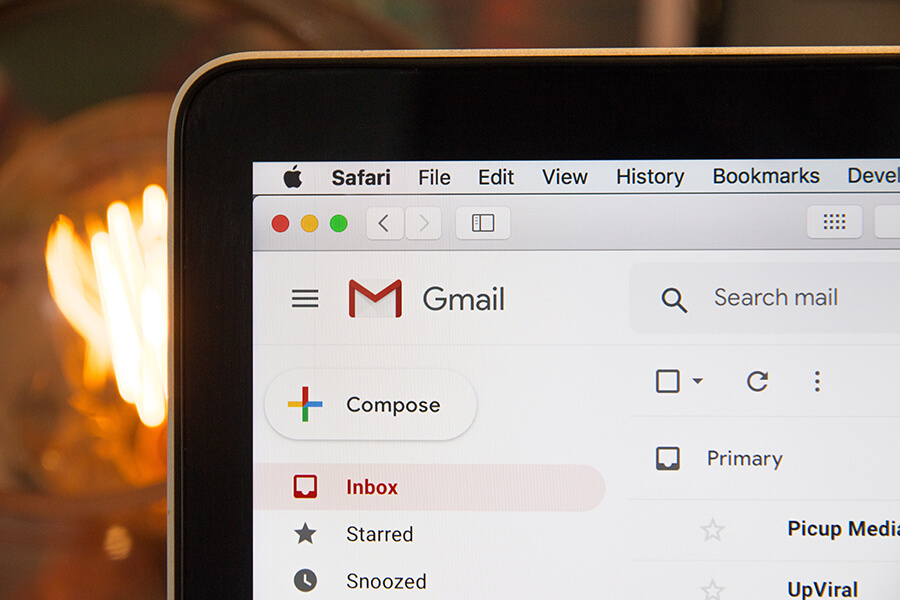
The blogging tools and techniques marketers have at their disposal today are constantly evolving — which has caused some to lose interest in email.
But the latest data is crystal clear: email is here to stay. The number of email users is predicted to grow from 4.3 billion to 4.7 billion users by 2026.
Email has some of the highest ROI of any digital marketing channel, driving $36 for every $1 spent. Social media may make the headlines, but email is 40 times more effective at acquiring new customers than Facebook or Twitter.
Clearly, email marketing can be a powerful weapon in the blogger’s digital marketing arsenal.
Here are four key ways email stands out from other marketing techniques for bloggers:
- It’s personal: Email marketing allows you to personalize messages for each individual on your email list. By collecting information about your readers during sign-up, you can create segmented lists (using an email marketing tool like ConvertKit). This allows you to tailor your message in all sorts of creative ways.
- It’s measurable: While most digital marketing channels include some sort of analytics to gauge results, email is one of the most easily measurable. The impact of each email marketing campaign can often be measured in real-time across a wide range of behaviors, allowing you to accurately determine the ROI of your efforts.
- It’s scalable: Email is arguably the greatest one-to-many communication tool ever invented, especially for bloggers. No matter how much you grow your email list, email allows you to deliver a consistent experience to everyone on your list.
- It can be automated: Not only can email campaigns be written and scheduled in advance, but they can be triggered by all kinds of user behaviors to give your audience the right message at the right time.
Alright, so clearly email marketing is a major channel you need to pay attention to as a blogger.
But beyond just its benefits from a marketing perspective, email marketing can also help you monetize your blog much more effectively.
How Bloggers Can Profit from Email Marketing
No matter what your blog is about, you’re probably asking yourself these kinds of questions daily…
- How do I increase traffic to my blog?
- How do I get more readers to come back each week?
- How can I monetize my blog?
Well, guess what… email marketing can help you in all three of these departments.
Email Marketing Can Increase Traffic to Your Blog

Even your most enthusiastic fans won’t catch every new piece of content you publish.
Most of us simply don’t have the time to revisit our favorite blogs every day to see if there’s anything new.
As work and other things continue to vie for our time, it’s easy to lose interest.
Email gives you a chance to let everyone on your list know exactly when you publish new articles. It allows you to stay top-of-mind for potentially thousands of people.
When combined with a consistent posting schedule, email marketing can help you regularly steer large amounts of traffic directly to your latest and greatest content.
You can even use automated drip campaigns (when using one of these top email marketing tools) to send some of your older posts to new subscribers, exposing more people to your best articles and extending their shelf life.
Email Marketing Can Increase Your Regular Blog Readership
Readers who voluntarily opt-in to your email list, by providing their email addresses, have demonstrated that they have more than just a passing interest in your content.
They’re genuine fans and potential leads you can cultivate into paying customers.
By taking advantage of the personalization email marketing services make possible, along with some clever content, you can turn your subscribers into your own personal marketing team.
Not convinced? According to my recent blogging statistics, blog posts are 3.5 times more likely to be shared on social media by your email subscribers.
This helps you to increase your brand awareness and grow your email list even further.
Email also gives you a chance to give people special bonuses like eBooks, white papers, templates or video courses as incentives for signing up and joining your list.
Some examples you can gather inspiration from right here on my blog include things like:
My roundup of the best blogging books, which includes a few of my own free books
- This guide about how to create a blog business plan and corresponding free template
- My tutorial on how to promote your blog features an easy PDF download option
- The free blog post templates I give away in connection with my guide about how to write a blog post (also known as a content upgrade)
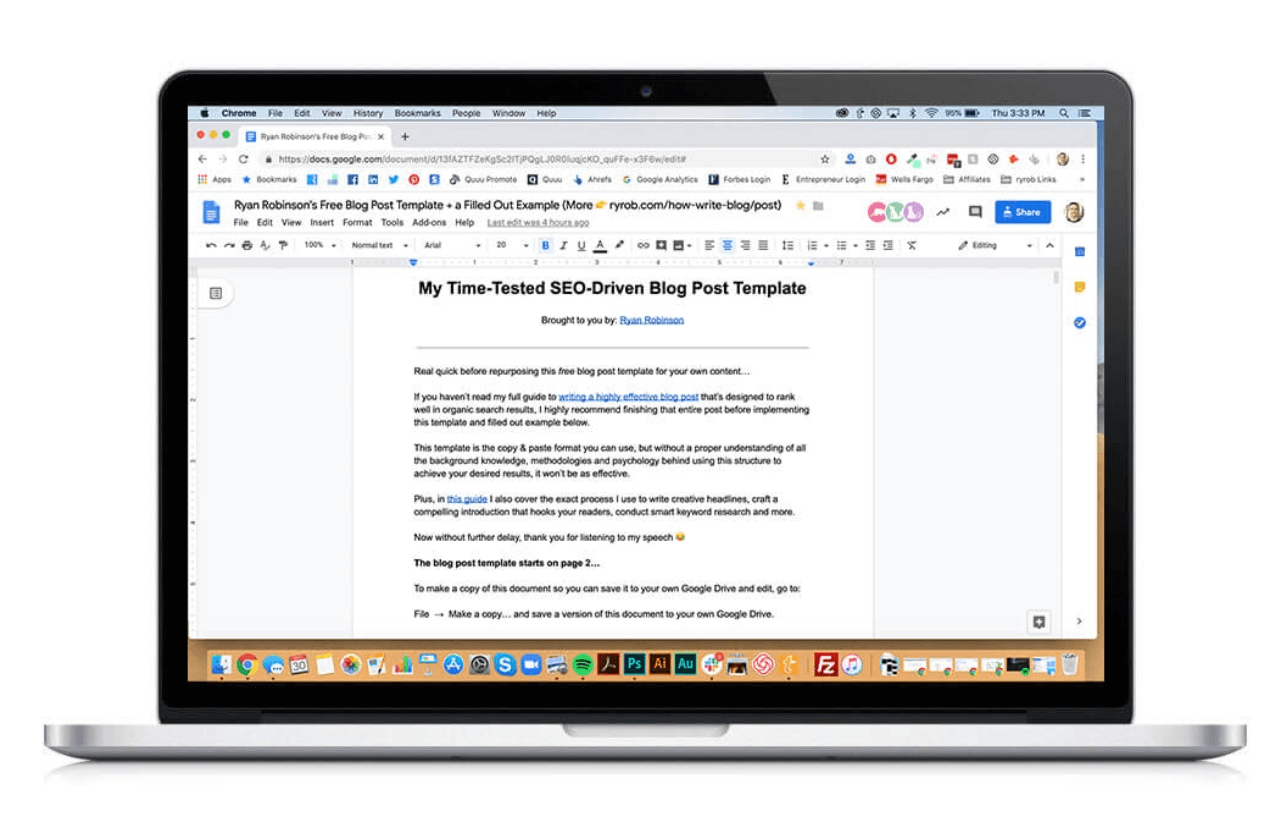
These attractive offers can draw more people to your site, and in turn, grow your blog readership as more people discover your content.
Email Marketing Can Help You Monetize Your Blog
Email marketing allows you to build real connections with your audience and personalize your content to better match their interests.
By building trust with your email list, you’ll be in a better position to eventually sell them a product or service. Here are a few examples of ways you can monetize your blog.
Product examples to monetize your email list:
- Paid eBooks
- Virtual summits
- Online courses
- Digital media
- Software and Apps
Service examples to monetize your email list:
- Consulting
- Personal coaching
- Freelancing services
- Promotional services
- Premium memberships
Sponsors and Affiliate Marketing
If your list gets large enough or is targeted toward a specific group of people, you may even be able to get sponsors and sell advertising space in both your email newsletter and on your blog.
Some advertisers are willing to spend hundreds, even thousands of dollars for ads, mentions, product reviews (like my roundup of Bluehost reviews), or links in popular email newsletters.
You could also take advantage of affiliate marketing opportunities. These let you sell other people’s products and services (like these affiliate programs for bloggers) within your emails for a cut of the profit.
Word to the wise: If you do choose to go this route, don’t just load up your emails with a bunch of ads and sacrifice writing meaningful content.
Too many ads or ads that have nothing to do with the topic of your newsletter will undermine your credibility and get people clicking on the “Mark as spam” button.
This puts you in hot water with your ESP and chips away any trust you’ve built with your audience. It can also affect your email deliverability.
Instead, try to find sponsors whose products and services align well with your content and tactfully direct your users to them when appropriate.
14 Key Email Marketing Terms (Explained)
Email marketing services sometimes seem to be speaking a whole different language. Like any discipline, email marketing has its own vernacular.
Here’s a glossary of some of the most common words and acronyms you’ll encounter.

- Bounce Rate: the percentage of email addresses in your subscriber list that didn’t receive your message. An email is classified as a bounce when it cannot be delivered and is rejected by a subscriber’s email server. So, a high bounce rate means your email deliverability is low. Bounces are divided into two categories, hard and soft bounces. A hard bounce indicates a permanent reason someone could not receive your email. Invalid email addresses, domain names that no longer exist, or being blocked can all cause hard bounces. A soft bounce usually indicates a temporary delivery issue, like a full inbox or an offline server.
- CTA (Call to action): an image or line of text that encourages your audience to take action — like make a purchase, click a link, sign up for a course, etc.
- CTR (Click Through Rate): the percentage of people who clicked on at least one link in your email message.
- Delivery Rate: the percentage of emails that were successfully delivered to the recipient’s inboxes. It is the total number of emails sent, minus hard and soft bounces, divided by the gross number of emails sent.
- Double Opt-in: a two-step process by which subscribers must confirm their opt-in. This is done by clicking a link in a confirmation email or responding to the confirmation email in some other way.
- Drip Campaign: a type of email marketing campaign. They involve a sequence of emails that are triggered by a specific user action or timeline and are delivered in a specific order.
- ESP (Email Service Provider): a company that provides email marketing or bulk email services. Also referred to as an “email marketing service” or “email marketing software.”
- Open Rate: the percentage of subscribers who have opened your email. Open rates vary wildly across industries, but in general, you want to see at least 20% or better.
- Pre-header text: a small amount of text displayed to give a preview of the email’s content.
- Personalization: refers to adding personalized elements to your email message based on information you have collected about that specific user. This could include using the recipient’s name, referencing their location, order history, or other data.
- Segmentation: refers to dividing your list into various categories depending on your subscribers’ geographic location, interests, purchase history, and more.
- Spam: illegitimate or unsolicited email messages.
- Transactional Email: automated messages triggered by the specific actions of a user. Some examples are welcome emails, shipping notices, order confirmations, password reminders, and purchase receipts.
- Unsubscribes: the number of your subscribers that have chosen to unsubscribe from your email list.
These are the basic email marketing-related terms you’ll need to familiarize yourself with. Expect to see plenty more enter the scene as you continue using email marketing software.
How to Keep Your Emails Out of the Spam Folder

In 2003, a law was passed to regulate commercial email: the Controlling the Assault of Non-Solicited Pornography And Marketing Act, or CAN-SPAM.
There are a few components to the law as it affects your email marketing efforts, but it can be summed up in three main rules:
- Each email must have a way for the recipient to clearly and easily unsubscribe
- Opt-out requests must be honored within 10 business days
- Organizations must maintain a list of people who have unsubscribed
Here are ten simple rules that can ensure your emails stay out of the spam folder and comply with the CAN-SPAM regulations:
- Use real, active email accounts for your From, To, and Reply-to addresses
- NEVER purchase a list of email addresses
- Consider using a double opt-in sign-up (these top email marketing services require it)
- Use a reputable email service provider (like ConvertKit)
- Keep your file sizes small for any images, GIFs, or videos
- Steer clear from attachments, especially .exe or .swf files
- Include your business address or P.O. box in each email
- Avoid spammy words and phrases in both your subject lines and the main body of your email
- Be sure to include a link to unsubscribe at the bottom of your emails
- Honor unsubscribes and stop sending people messages if they no longer want to receive them
Next up in our email marketing regulations discussion, let’s (quickly) talk GDPR.
GDPR: What It Is and Why You Should Care
On April 14, 2016, the EU Parliament voted in favor of the General Data Protection Regulation (GDPR) which established a set of data privacy laws across Europe.
Some of these regulations govern the use of email marketing in ways all marketers should be familiar with, whether you explicitly do business in Europe or not:
- Email consent must be freely given: Users must actively provide consent. Pre-checked boxes and similar mechanisms are not compliant with GDPR. Email consent also needs to be separate from any other terms or conditions. Under GDPR, you can’t force people to subscribe to your email list in exchange for a free eBook you wrote, a white paper, or a download.
- Records of this consent must be kept: GDPR requires companies to keep accurate records of consent when people sign up for email lists. Your ESP should be able to help in this regard.
- You may need to get consent from existing subscribers: If you have no record or evidence you received consent, you may need to launch a re-permission email marketing campaign to document consent.
There is more to GDPR than these 3 rules so be sure to read over the regulations yourself to ensure you’re compliant.
How to Build an Email Marketing Strategy for Your Blog in 7 Steps
In order to be successful with your blog email marketing (in terms of driving traffic and monetizing your content), you’ll need a clear strategy. Here’s mine.
1. Identify your email marketing goals
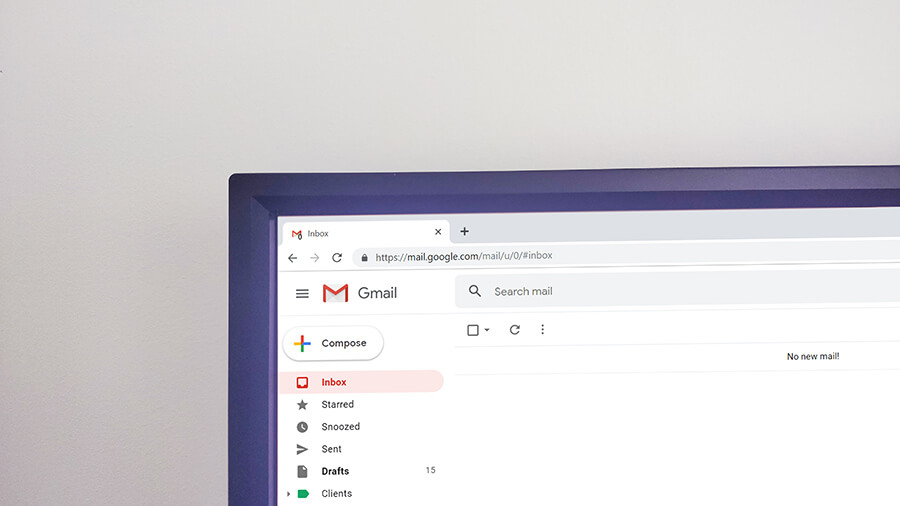
Top performers in any field, from sports to business, set goals for themselves to focus their performance and prioritize their time and resources.
Succeeding in email marketing isn’t any different.
Here are a few goals you may want to consider for your own email marketing efforts:
Get more subscribers: The money is on the list. A healthy, growing list of subscribers is what will enable you to accomplish all of the wonderful things I’ve mentioned in this article. But it’s important to realize that lists decay by about 22% every year as people change email addresses, unsubscribe, and even just lose interest. You need to constantly work at growing your list if you want to take advantage of the power of email marketing.
Increase engagement: Maybe you’ve already started collecting email addresses and sending newsletters. Now you need to focus your efforts on increasing engagement. After all, having a massive list is worthless if your audience is not taking action. Engagement could come in the form of opens, click-throughs, social shares, or even email responses.
But how can you actually drive these metrics? Consider evoking the Fear of Missing Out (FOMO) in your emails. For example, you can provide exclusive access to some of your content pieces and encourage users to take action by using tools like countdown timers in emails. This kind of limited-time offer is likely to inspire much greater interest than your average CTA.
Grow traffic and increase conversions: As you advance in the email marketing game and develop products and services to sell to your audience, you’re naturally going to focus on increasing conversions. Email is a great tool for both nurturing leads and converting them into paying customers.
2. Create a strategic plan of action

Now that you’ve determined your goals, you can start building your email strategy.
This plan doesn’t have to be overly complex or lengthy — think of it as a general outline for how you will create and schedule your content so you can stay focused and meet your objectives.
A good email strategy has 4 main components:
Identify your audience
All great content starts with having a firm handle on who your audience is.
- Who are you speaking to?
- What are they interested in?
- How does this align with what you are offering?
If you’ve already started your blog, you probably have a good idea who your audience is — but depending on the way you’ve captured emails on your blog, your subscriber list may have more narrowed interests.
For example, if you’ve placed email capture forms on blog posts with a specific focus or topic (like cooking, for instance), then you know the subscribers who came in through those forms are interested in that subject.
The better acquainted you are with your readers, the easier it will be for you to write compelling content to keep them hooked.
Separating your audience into different categories depending on their interests, location, or behaviors will enable you to develop different versions of your content that can be tailored for each group.
Define your content
Now that you know exactly who your audience is and what your blogging goals are, you have to figure out what exactly you’re going to send them.
In addition to sending your audience your latest blog posts, think of other ways you could take advantage of email to offer more personalized and focused messages.
For example, you could send companion content that offers a behind-the-scenes look at the blog post outline that fueled your latest article.
You could write holiday or special event-themed messages. Maybe you want to send surveys or polls that ask for feedback and share the results. Another alternative is to curate content from other blogs or websites.
Additionally, you may create different versions of your content based on the segments you create. The more segments you have, the more you can tailor your content to match your audience.
Take for example, how I’ve created a series of hosting-related articles here on my blog that address different segments of my audience:
- This roundup walks through the overall best hosting plans on the market
- This one guides budget-conscious readers to the right cheap hosting plans
- I also cover a hyper-specific need with these month-to-month hosting plan options
- This one is designed for readers seeking only free hosting plans to get started with
- And in this tutorial, I explain what shared hosting is (while offering plan suggestions as well)
Keep in mind, it takes time to create multiple versions of your content, so plan accordingly.
Determine your email cadence
Most new bloggers send a monthly newsletter to help maintain brand awareness, but there are no hard and fast rules here.
You may have to experiment to determine exactly what the right cadence is for your audience. As you begin to publish more content, it’ll make sense to deliver more emails to your growing list.
Some bloggers have found success sending weekly or even daily emails to their lists, especially if their business revolves heavily around their email lists.
If you do choose to send frequent emails, make sure they are high quality and deliver value.
If you ever have to choose between taking time to write a quality email or needing to just send something out to readers to keep up with your schedule, err on the side of quality.
Opening up your email marketing software and sending out a low-value or rushed email just to maintain consistency will do more harm than good.
To begin, stick to a monthly schedule and then adjust as you get into the groove with your content.
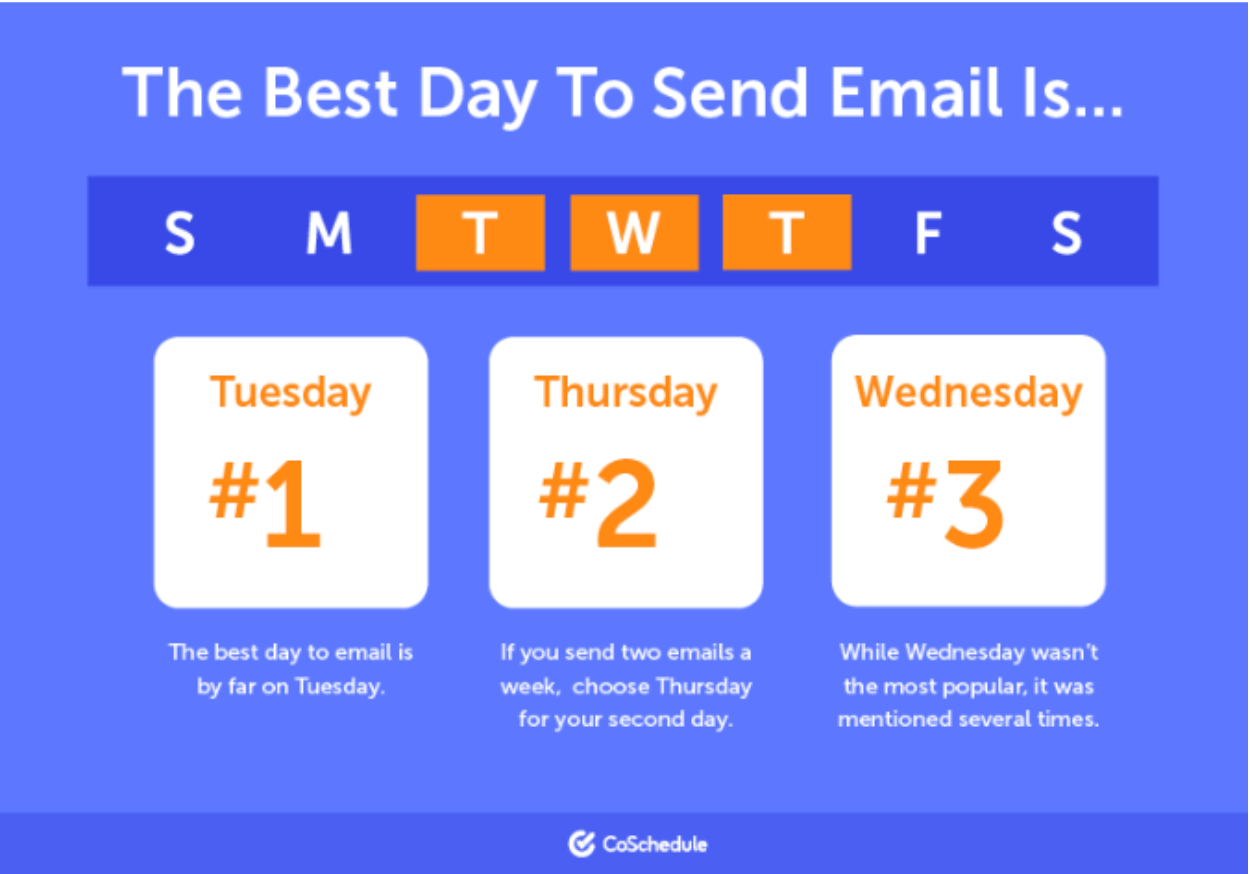
You’ll also need to pick which day and time you’ll be sending your email marketing campaigns out.
Mondays and Fridays typically have lower open rates than other days of the week. That’s because most people are either coming back from their weekend or starting it.
According to most recent blogging data, Tuesdays are your best bet. Again, experiment to find what works best with your particular audience.
Create a schedule
With your content and cadence firmly in mind, it’s time to set a production schedule to ensure you’re cranking out great emails.
Being consistent with your email marketing is one of the best ways to grow your list.
Your production schedule will be unique to you based on your personal circumstances and methods. Start by estimating how long it will take you to gather ideas, write your content, and design your email or template.
Try to develop a realistic schedule you’ll be able to stick to.
You may even think about writing a few email campaigns in advance and scheduling them in your email marketing software to give yourself a little wiggle room.
Once all of these elements are firmly in place, the last thing left to do is hit send!
It can be a little nerve-wracking to shoot off your first email, but remember, email marketing is all about continuous improvement.
Take advantage of the analytics your ESP provides to iterate and improve your emails with each send.
Email marketing do’s:
- DO: Grow your email list by providing valuable content
- DO: Write catchy pre-header text
- DO: Segment your list and use personalization
- DO: Write emails that contain valuable or entertaining content for your readers
- DO: Use analytics to refine your content and overall blog strategy
- DO: Try A/B testing multiple designs and formats to see which is more effective
Email marketing don’ts:
- DON’T: Buy a list of email addresses. Ever.
- DON’T: Use spammy words or phrases
- DON’T: Send the same email to everyone on your list
- DON’T: Spam your readers with low-value messages
- DON’T: Ignore your email metrics
- DON’T: Copy someone else’s content
Now, let’s talk about how to choose the right ESP (email service provider).
3. Choose your email service provider
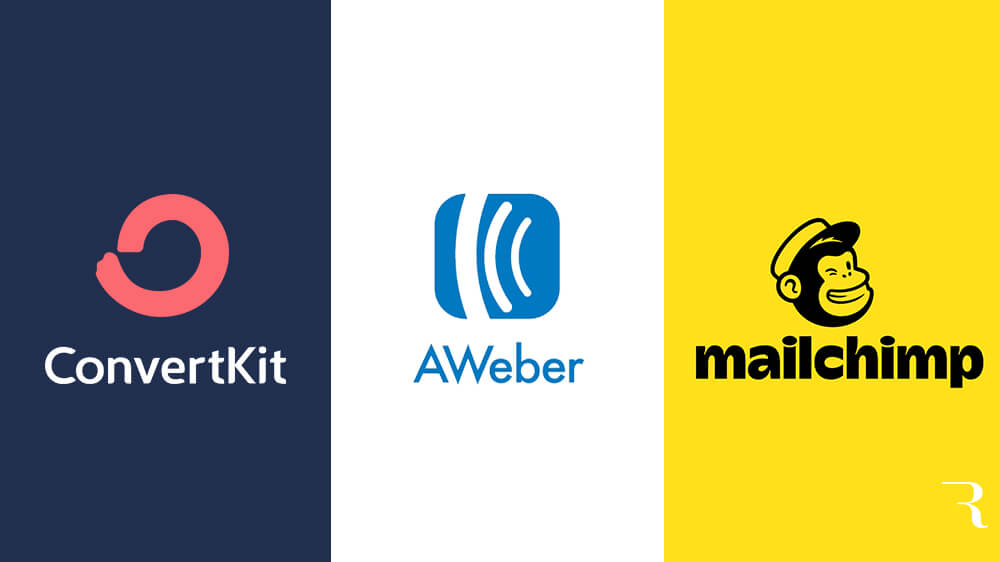
Email service providers (ESP), also called email marketing services, are companies that offer bulk emailing services. They are critical partners in your email marketing campaigns.
Here are the top 3 email marketing services for bloggers in 2024:
If you’re weighing your options and want to read a detailed breakdown of which email marketing tool is best for your unique goals, check out my comparison of ConvertKit vs AWeber vs Mailchimp.
ESPs like these three above provide a wide range of services that are essential to your email marketing efforts — including email tracking, list management, email deliverability as well as ensuring your emails are CAN-SPAM compliant.
Aside from these basic features, you may want to evaluate what advanced features will be important for your email marketing campaigns.
Understanding and Choosing Key Email Marketing Features
- Automation: Drip campaigns, transactional emails, and other forms of email marketing automation can greatly expand your email marketing capabilities and allow you to send the right messages at precisely the right time. Most of today’s popular ESPs offer the ability to both automate and schedule messages in advance, but ConvertKit is by far the leader in this category today.
- Email Templates: While plain-text emails still serve an important service, you’re going to want to send eye-catching emails that look great across all email clients and operating systems. Coding up HTML emails is notoriously difficult. Flexible templates can help you craft beautiful emails that make your content shine. This can also help with brand awareness, as readers will come to recognize your emails at a glance.
- Advanced analytics: Understanding just how well your campaigns are performing is an essential part of email marketing. Unlike print, radio, or television marketing, email is extremely trackable. Your ESP should offer you a variety of analytics in an easy-to-use dashboard so you can constantly improve your email campaigns.
- Mobile-friendly: According to Hubspot, 46% of email opens happen on mobile devices. Your emails must look good across a variety of screen sizes and operating systems. A good ESP should offer tools to both create and test your email designs so you can be sure they look great no matter what devices they’re being viewed on.
Aside from these key features, your biggest priority should be finding an ESP that fits within your budget.
Fortunately, most of the leading ESPs have a variety of very low-cost plans (and free trials) for bloggers and solopreneurs, which can still help keep your blogging costs very low.
As your list grows and your needs increase, you’ll need to either sign up for a paid monthly plan or pay a fee for each individual email marketing campaign you send.
Free Email Marketing Tools and Resources
All these tools and resources are free and can help you with your email marketing campaigns.
- TestSubject: The three factors that influence email open rates the most are the sender name, subject line, and pre-header text (the little preview of an email’s content displayed in some email clients). Smart marketers optimize these three factors to give their email a better shot at earning an open. TestSubject is a free tool that allows you to preview what your sender name, subject line, and pre-header text look like on a variety of popular mobile devices. It also helps you avoid the potentially cringe-worthy effects of truncation that can happen to some unfortunately worded subject lines (see below).
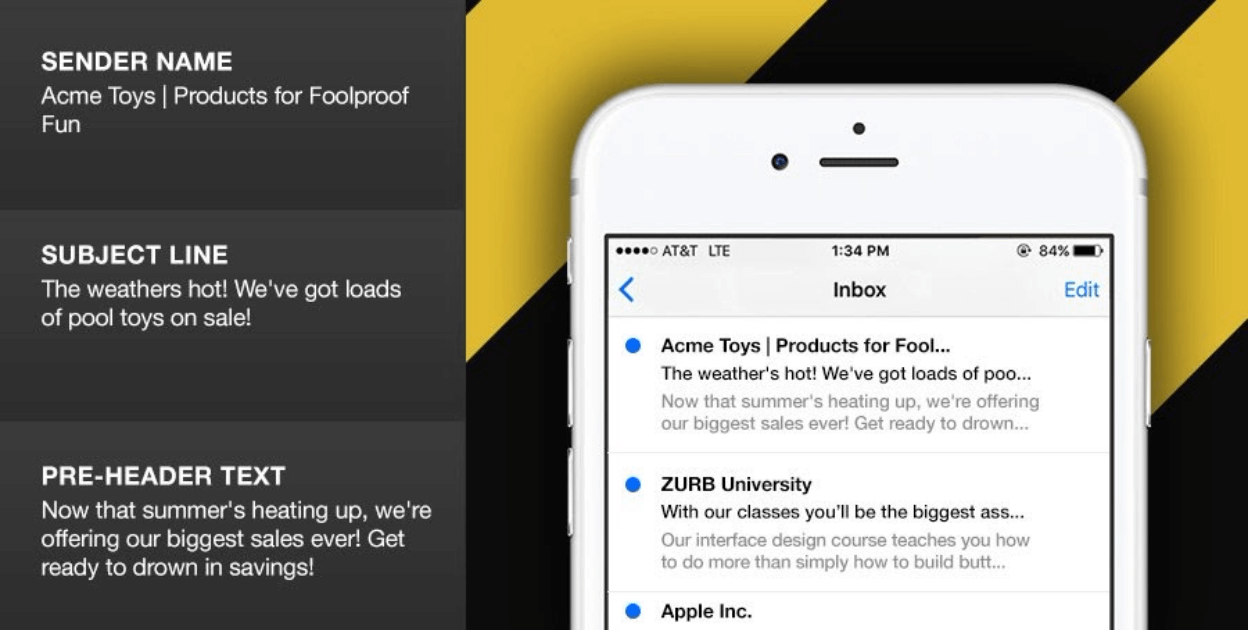
- ISnotSPAM: The vast majority of email accounts use sophisticated spam filters to prevent illegitimate or nefarious emails from making it into the inbox. The problem is, that many of these spam filters could mistakenly flag your message for spam if it has certain characteristics. When your email lands in the spam bin, your message is not reaching its intended audience and your time and effort is wasted — this is a definite blogging mistake to avoid. Additionally, your ESP could be flagged which could put your account at risk. ISnotSPAM is a free service that will analyze your email for any spammy characteristics and highlight any changes you should make. Simply send your email to the address on their site and view your report.
- Hemingway: The best emails are bold and clear. They’re not loaded with useless jargon or overly complicated words. Even great writers benefit from a second set of eyes to make sure they haven’t gotten too wordy. So what can you do if you can’t afford the services of a professional editor? Try Hemingway, a free web and desktop app that will analyze your writing and offer suggestions on how to ensure your writing has a greater impact.
- CoSchedules Email Subject Line Checker: A good subject line is one of the most powerful ways you can influence someone to open your email. The Email Subject Line Checker by CoSchedule is an easy-to-use tool that grades your subject lines and gives specific, data-backed suggestions for optimizing them.
4. Optimize your blog to get more email subscribers

You collect email addresses by putting email capture forms on your website.
ESPs typically provide an HTML/CSS code snippet you can copy and paste into the code of your website or template — and ConvertKit integrates directly with all of the top WordPress themes and WordPress plugins.
Where you place your email capture form and what information you collect can have a big impact on how quickly you grow your email list. Additionally, you may choose to use a combination of locations for optimal effect.
Here are a few pros and cons for each:
- In your header: Putting your email capture form in your header by your site navigation is a solid choice. It’s easy to see, displayed across all pages, and can be integrated seamlessly into your site design.
- In your footer: The footer at the bottom of your website is another good choice for your email capture form. It’s not too prominent on the page, which is great for the user experience, but some may miss it if they don’t scroll down far enough.
- On a separate landing page: A separate landing page for your email capture form may not get as much traffic as other pages on your site, but it will give you a chance to sell people on why they should sign up for your list and all the benefits they can expect to receive. In turn, this may result in subscribers that are less fickle and more invested in receiving your emails.
- At the bottom of each blog post: This is a great strategy because it allows you to tweak your copy for each post and also segment your list based on topic depending on which posts each form is attached to. It can be a bit cumbersome to implement, but it’s a great tactic that will help you personalize your message in unique ways (something we’re experimenting with over on my girlfriend’s blog, Vegan Anj.
- In an exit popup: An exit-intent popup uses clever code to display a popup when someone tries to leave your website. It’s an attention-grabbing method that can be really effective, but may also irritate some users. Use sparingly.
In addition to placement, you want to think about what information you will request in your form.
The less information you request, the easier it will be for people to sign up. While this sounds appealing, you will have very little information about your audience to go on when you write your content.
This makes it harder to target them with personalized content and compelling offers.
If you ask for too many details, this creates more friction and you’ll see fewer people signing up for your list. Writing compelling content will be easier, but fewer people will complete the process and join your list.
Experiment to find a healthy balance that will work best for you.
5. Increase your email open rates

In addition to the trust and goodwill you’ve built with your audience, the top three factors that influence your email open rate are your subject line, sender name/email, and pre-header text.
Here are a few best practices and suggestions for improving the effectiveness of each:
Subject line:
- Keep it short and sweet
- Don’t use spammy words like free, limited time, special offer, etc.
- Include personalization
- Use emojis
- Be descriptive yet appeal to curiosity
- Use numbers
- Avoid all caps
Sender name/email:
- Use a familiar name your audience will recognize
- Avoid a ‘no-reply’ email address
- Ensure your email address matches your URL
Pre-header text:
- Write a subject line that conveys an exciting message
- Include a call to action
- You typically have around 100 characters to work with, use all of it
- Keep it concise
- Use emojis
My guide on how to write a headline for your blog posts (to truly capture the attention of your readers) can help you create great subject line text, as well. And be sure to check out my free blog headline generator tool to get some more headline inspiration.
6. Boost your email clickthrough rates

People are opening your emails … but you’re not seeing click-through. This could signal problems with your email design, content, or the CTA you’re using.
Here are some tried-and-true email marketing tips to drive higher clickthrough rates in your email marketing campaigns:
Design:
A text-heavy, long, or visually unappealing email will keep people from clicking.
Focus on making your emails scannable. Use eye-catching images to make your emails interesting to look at.
Use responsive email templates (like those included in ConvertKit) to ensure your emails look great on all kinds of devices.
Content:
When it comes to email, whether in the context of messaging your email list or in doing smart blogger outreach, brevity is usually the name of the game.
Nobody wants to read an overly long email, so keep your thoughts concise and organize your thoughts into scannable chunks.
Pay attention to your analytics to ensure your content is resonating with your readers. Ask for feedback from readers and apply their suggestions to write more compelling content.
Call-To-Action (CTA):
Sometimes the problem is simply your call-to-action. An unclear or unappealing CTA will be ineffective—focus on making your CTAs clear, enticing, and easy.
Use large text, buttons, vibrant colors and you can even create dynamic QR codes to draw people in.
Additionally, try to have only one CTA in your email. For example, you can add a single call widget and it will be more effective and will not confuse your readers. Multiple CTAs will be confusing to your readers and undermine their effectiveness.
7. Monetize your email list

Email marketing is a great way to inform and entertain your audience, as well as build relationships and nurture leads.
You can even get great new blog post ideas from listening to what your readers have to say.
But at the end of the day, you’re going to need to monetize your list by offering paid products or services.
To successfully monetize your email list, you need to build a strong relationship with your subscribers by delivering real value.
Pushing offers too hard or too soon will only irritate your readers and shrink your subscriber list.
Instead, focus on delivering high-quality content regularly (consider starting a podcast as one idea to add value while attracting sponsors, just be sure to review which podcast hosting plans will be best for you) — and only weave in offers that are relevant to your readers after trust has been built.
It takes time, but a healthy list can pay off for years to come.
Final Thoughts
Email marketing and blogging go together like peanut butter and jelly.
They complement each other and can help significantly amplify your results from blogging.
A solid email marketing strategy will help you grow your blog and form real relationships with your readers — just ask these blogging pros who all agree.
In turn, these connections will help you cultivate an audience of potential buyers who are excited about the products and services you can offer them.
So start building your email list today, commit to writing incredible content, and see just how powerful email marketing can be.

77 replies to “Email Marketing for Bloggers in 2024: 7 Ways I Got 151,432 Subscribers”
Bloggers like me really ask for this kind of informative article, Thank you for providing this. I appreciate your efforts.